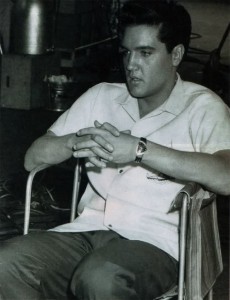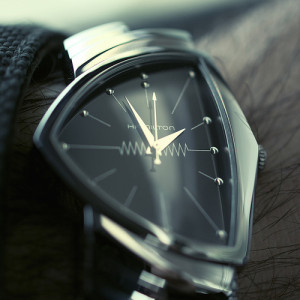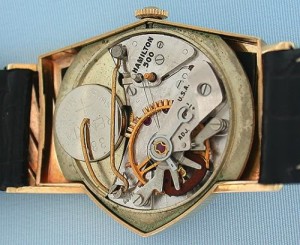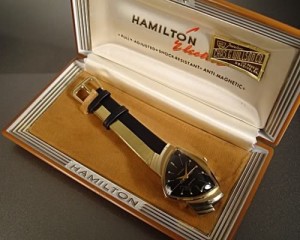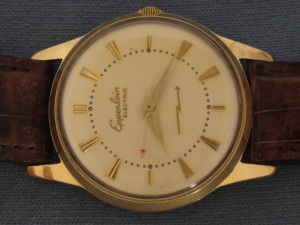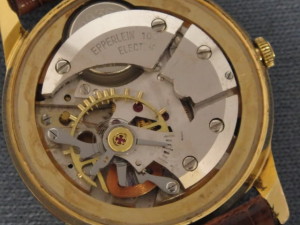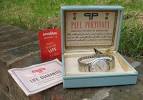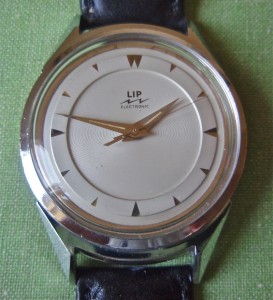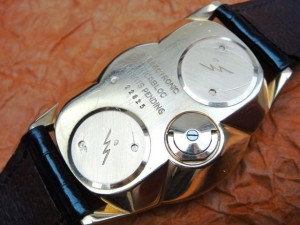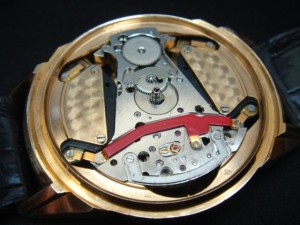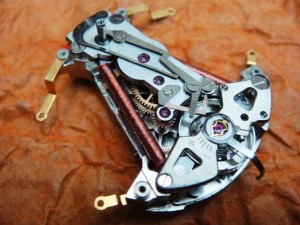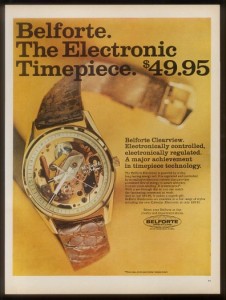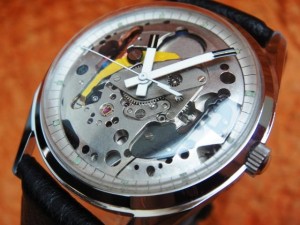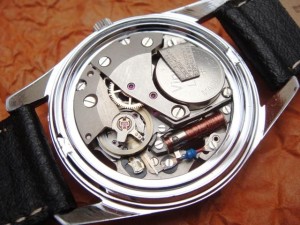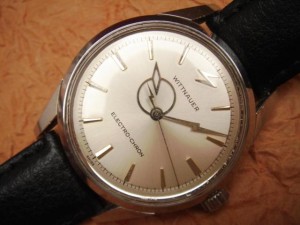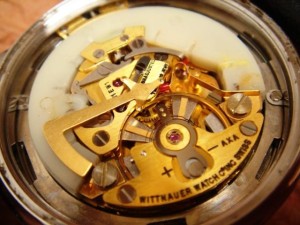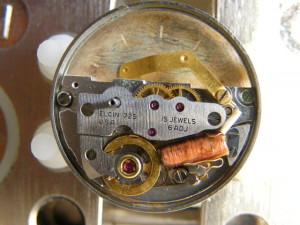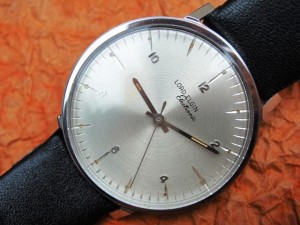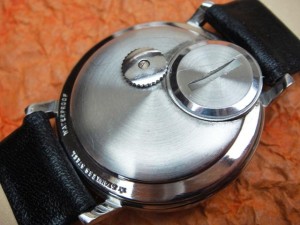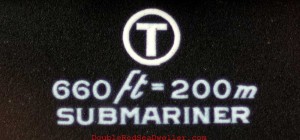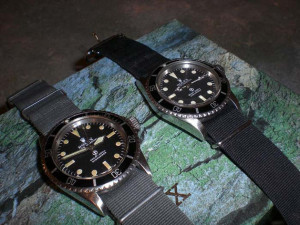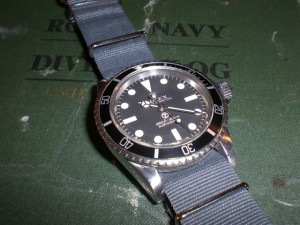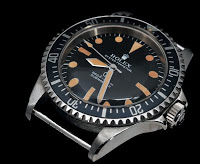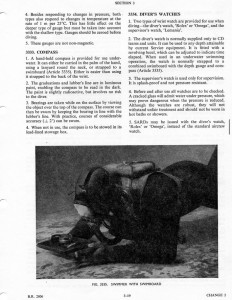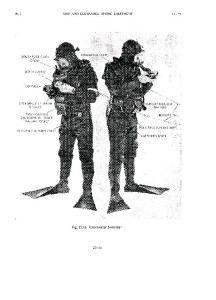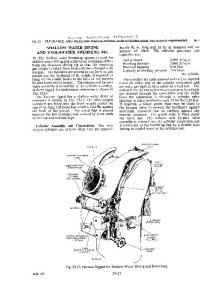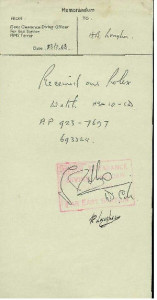The pioneers of the modern watch
At the end of the 1950s the American firm Hamilton won an international battle by being the first company that produced a wrist watch that got it’s energy from a battery. At the same time the French firm Lip, the American Elgin and the German Epperlein were working on this development. How did the development of the very first electrical wrist watches go?
Pic.: Elvis Presley wore a Hamilton Ventura in the movie ‘Blue Hawaii’ in 1961
On the 3rd of January 1957 a new chapter in the history of time keeping started: the first new invention for the wrist watch, since the invention of the automatic watch by John Harwood, was the Hamilton Electric 500. Although still having a balance it was no longer driven by a spring but by a coil that moved in a magnetic field. Since the beginning of the 1950s the French firm Lip, the American Hamilton and the German Epperlein from Pforzheim had begun with the development of an electric wrist watch. The Swiss watch companies on the other side expressed an absolute non-interest in these watches. They kept trusting the unlimited possibilities of the mechanical watch. It was not before the 1980s that they tried to catch up with the introduction of the Swatch.
‘Watch of the Future’
Under the leadership of the head of the research department, G. Luckey, the Hamilton Watch Company in Lancaster, Pennsylvania (USA) started directly after WOII with the development of an electric wrist watch. In 1952 the first prototypes were ready and serial production started at the end of 1956. On the 3rd of January 1957 the first two legendary models ‘Ventura’ and ‘Van Horn’ were shown to the press and in April 1957 they became for sale. The ‘Watch of the Future’ was ready for the market. Their revolutionary cases are designed by Richard Arbib, known for his car designs for General Motors and the American Motors Corporation. With the introduction of these models classic made watches became less and less important and the rise of the design watch started. Nowadays nearly all watches are designed by good designers or artists, the factory teams are replaced by freelance designers.
After the very successful Ventura tens of interesting and beautifully styled models followed which all had the caliber 500.
Pic.: The Hamilton 500 has, like all mechanical wrist watches, a back and forward going balance with torsion spring. But in this case there is a coil on the balance and on the platine there are two permanent magnets.
How it works
The Hamilton 500 has, like all mechanical wrist watches, a back and forward going balance with torsion spring. But in this case there is a coil on the balance and on the platine there are two permanent magnets. A small pawl on the axis of the balance pushes once per rotation against a contact spring that closes an electrical circuit causing, for a very short time, electricity to go through the coil on the balance. The coil then becomes magnetic and will be pushed away by the two magnets on the platine. The balance gets an impulse from the magnets by every rotation and a short time later an impulse from the balance spring in the opposite direction. This keeps the balance in motion and drives the cogs that in the end make the hands moving.
The biggest problem with these watches is the extremely accurate setting of the contacts and the branding and corrosion of these. This can be compared to the branding of the spark plugs in a car. These contacts are being opened and closed 10.000 times per hour. Per year this is about 100 million times. It is clear that this has always been a problem with the first electric watches. The invention of the transistor in 1948 brought the solution. This device can put power on and off without the need of contacts. The first time a transistor was used in a wrist watch was in the Bulova Accutron which also had a tuning-fork instead of a balance. With these applications the accuracy improved enormously.
In 1961 Hamilton introduced the much more reliable caliber 505. It had a totally renewed contact system that didn’t need adjustments from outside. Total production of the calibers 500 and 505 is about 500,000 before production ended in 1969. In 1974 the Hamilton Watch Company was sold to the firm Aetos Watch, a daughter of the SSIH Company (nowadays called SMH) to which also Omega belonged. Because of this Omega got his hand on the production techniques for the full-electronic wrist watch, as developed by Hamilton, without any mechanical part, the famous Pulsar with the well known red LED readoff.
Pic.: The Epperlein 100. The resemblance with the Hamilton 500 is striking: both have two contact springs, a coil on the balance and the same problems with the contacts. The lower picture is a Paul Portinoux watch with the Epperlein 100 movement
Helmut Epperlein, the pioneer
The development of the first German electrical wrist watch, the Epperlein 100, is in parallel with the American Hamilton 500. Near Pforzheim, in Kaempfelbach-Ersingen the first prototypes were produced round 1953 by Uhrenwerk-Ersingen, in short UWERSI. The owner was Helmut Epperlein, born in Chemnitz in 1911. The resemblance with the Hamilton 500 is striking, both have two contact springs and a coil on the balance but also the same problems with the contacts. The development costs were so high that Epperlein was forced to sell many patents to Hamilton. These patents which are owned by Hamilton contain the name of the inventor: Helmut Epperlein or one of his associates.
Another part of the deal was that Epperlein could use these patents in watches of their own. These were used to finally come up with a watch of their own: the 1959 Epperlein 100. The success of the Hamilton 500 and the Lip R27 were so overwhelming that the Epperlein 100 didn’t stand a chance. The production was ended a couple of years later. In total only 5,000 pieces were manufactured, of which a part, due to technical problems, was destroyed later. It is a very rare watch.
Pic.: Only 7,000 pieces of the Lip R27 were sold. In contrast to the Hamilton 500 and the Epperlein 100 the Lip R27 had a coil that was fixed on the platine. On the balance their was a piece of soft iron that was attracted to the fixed coil at the right moment. A pawl on the balance determined when the spring contacts closed the electric circuit so that the coil became magnetic. This principle is the opposite as the one seen in the Hamilton 500
Competition from France: Lip
Shortly before Christmas 1958 the Lip firm first offered the R27 to the public. This made it the first watch of this type in Europe and second in the world. The Lip watch was difficult to repair and pretty expensive. In total there were only 7,000 pieces sold.In contrast to the Hamilton 500 and the Epperlein 100 the Lip R27 had a coil that was fixed on the platine. On the balance their was a piece of soft iron that was attracted to the fixed coil at the right moment. A pawl on the balance determined when the spring contacts closed the electric circuit so that the coil became magnetic. This principle is the opposite as the one seen in the Hamilton 500. In september 1962 Lip brought out a much improved version: the Lip R 148. A successful watch that was sold in large numbers, even to the American company Elgin. The introduction of the R 148 directly caused the production of the first Swiss electric watch, the 1961 Landeron L4750, to be ended quickly. Too expensive, too late with the development and too late on the market.
The American firm Elgin had developed the very small caliber 722 and the somewhat bigger 725 but these were only in the stores in 1962 and turned out to be no success. Interesting is the fact that Elgin was the first company that patented a completely electric watch. The development had taken too long and the introduction turned out to be a disaster. The planned cooperation with Lip ended with nothing.
Pic.: Lip R 148
Pic.: a Wittnauer watch with the Landeron L4750 movement
Pic.: the Elgin with caliber 725
Laco
Without the calibers of Laco Pforzheim the history of the first electric watches is not complete. The Laco 860 and movements based on this were the first reliable and sold in large numbers electric watches in Germany. The design looks a lot like the Hamilton 500, with a coil on the balance. In 1959 Lacher & Co (Laco) was taken over by the rich Timex company. In the beginning you typically see both names used randomly.
Text: Pieter Doensen
